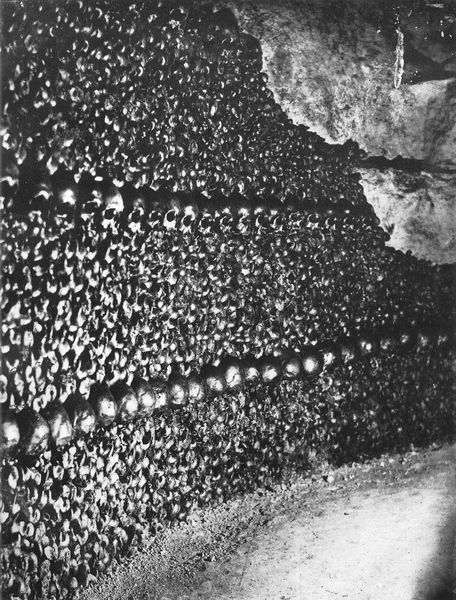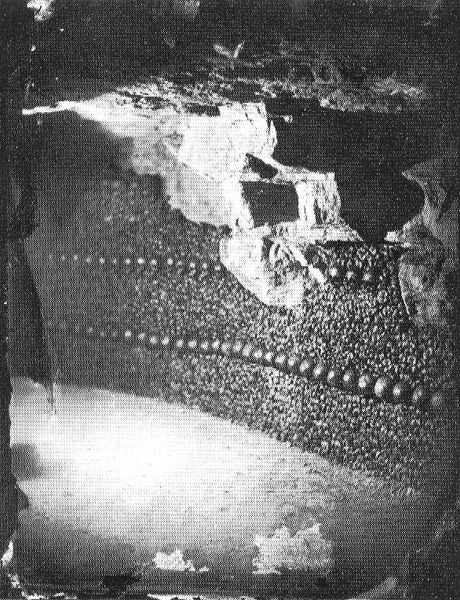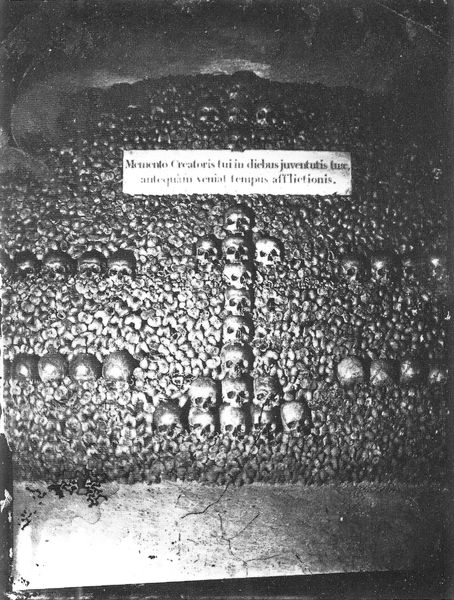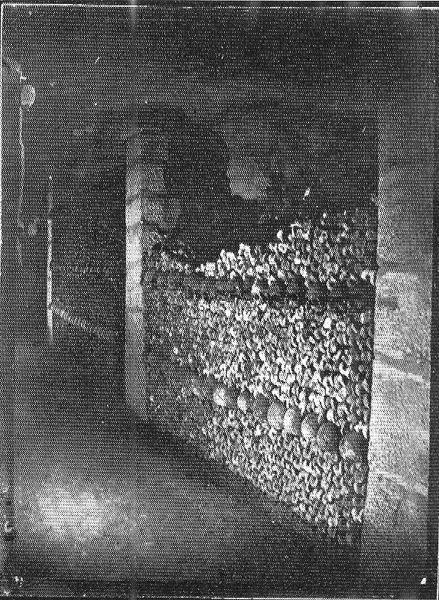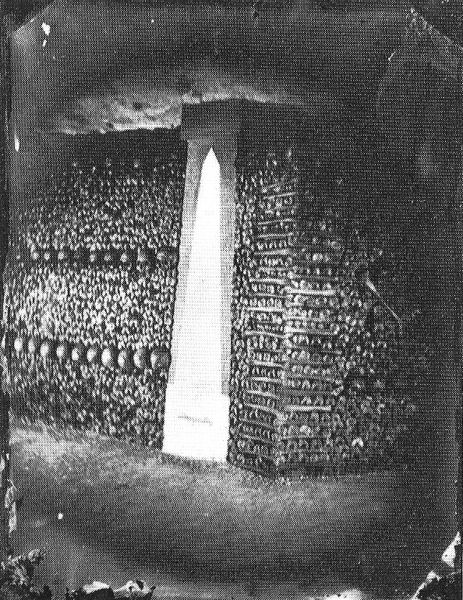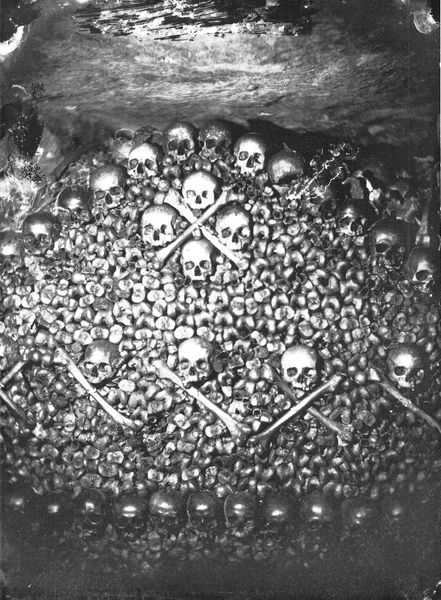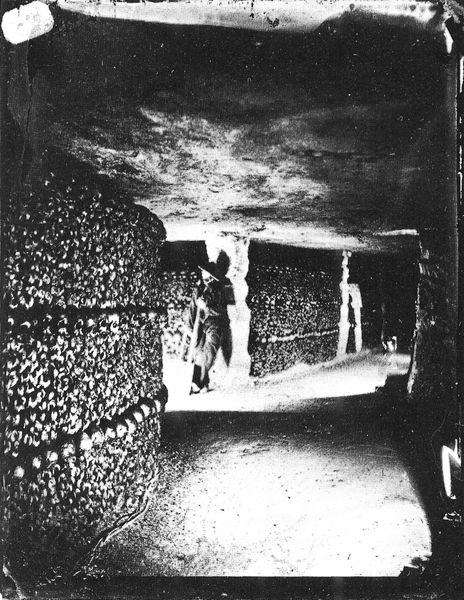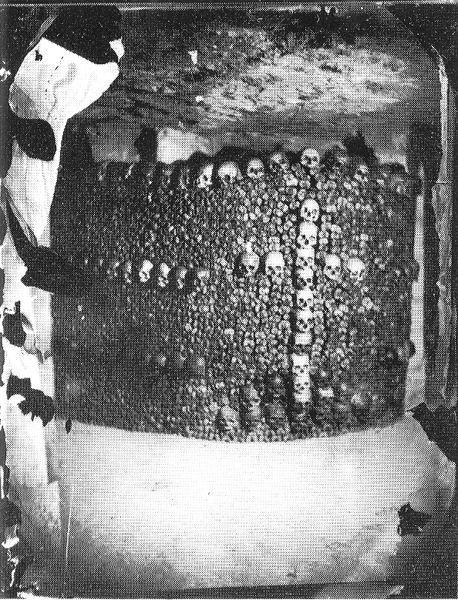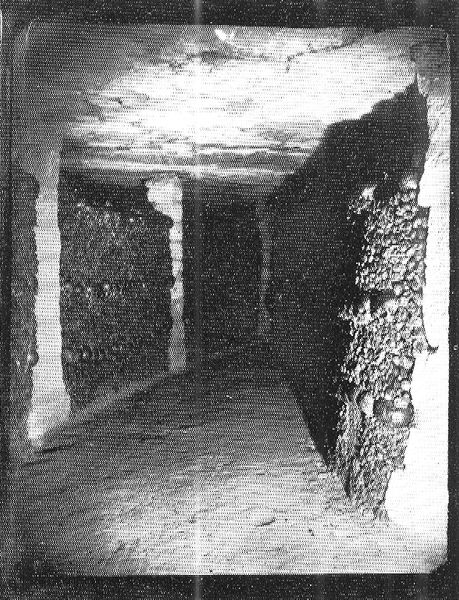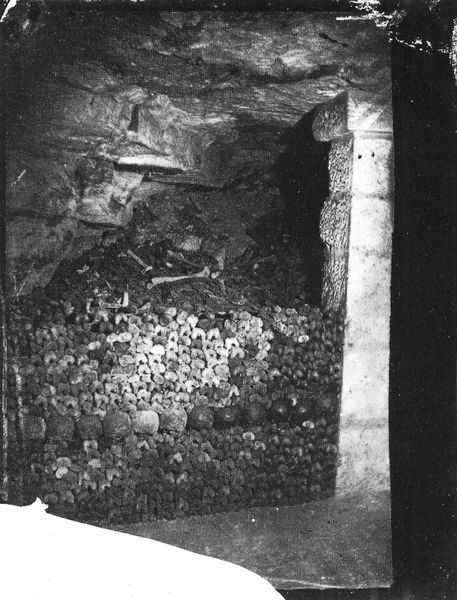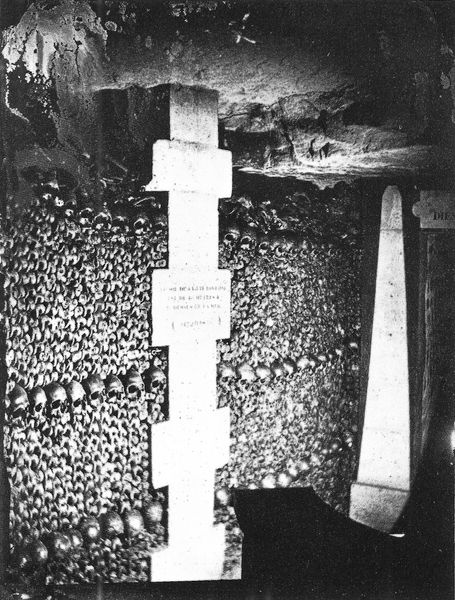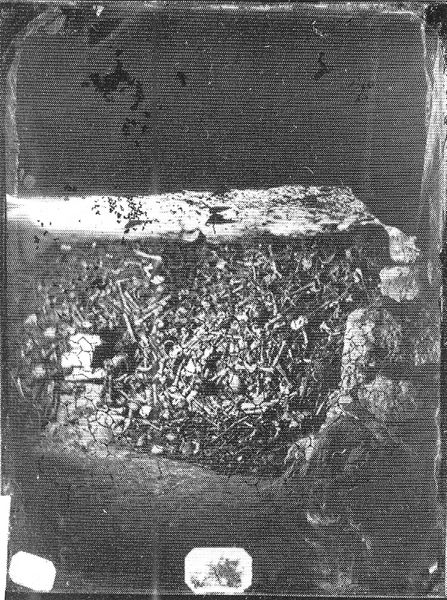
Copyright: Public domain
Editor: Right now, we're looking at Felix Nadar's "Catacombes de Paris" from 1861, a gelatin-silver print. Honestly, it's a bit unsettling, all those skulls stacked up! What do you make of its stark, almost confrontational composition? Curator: Unsettling is a kind way to put it, isn’t it? Nadar, bless his morbid heart, was after something beyond the purely documentary. This was one of the first instances of using artificial light in photography underground. Before this, you would think documenting the catacombs in Paris wasn't possible. Nadar created this image with magnesium flares which really speaks to the human drive for uncovering the unseen. Editor: So, it’s partly about the tech as well as the subject? That’s not something I considered at first. Curator: Oh absolutely. But the photograph does something more—it is the story of death. The composition of the image and darkness alludes to a conversation with the viewer of their mortality. Even Nadar's bravado doesn't quite disguise the palpable weight of history, the… whisper of what it means to truly vanish. It’s not just about the space, but about the echoes within it. What whispers do you hear? Editor: Well, thinking about it that way, I suppose it moves past just being shocking imagery into something a little deeper… something about facing our own end. Curator: Precisely. And isn't it curious how a photograph from so long ago can still strike such a chord today? We still carry those whispers with us. Editor: Yeah, it's amazing how much a little context can change everything. I will never look at death the same!
Comments
No comments
Be the first to comment and join the conversation on the ultimate creative platform.
